Peatland restoration update: First glimpse of the latest works to rehydrate Fleurieu Peninsula Swamps
In late March and early April, I was back on the Fleurieu Peninsula, near Mt Compass (SA), overseeing the latest round of works to rehydrate a couple of the most important remnant peatlands in this part of the world: Square Waterhole Swamp and Glenshera Swamp.
Next month we’ll take a closer look at the latest news from Glenshera Swamp, so this month let’s have a glimpse at the completed works at Square Waterhole Swamp. In short, it was a fairly complex undertaking, with lots of issues to tackle in a relatively small space!
This job entailed the removal of pines, willows and blackberry, as well as backfilling a small network of artificial drains across three different land tenures: a state government reserve (Hesperilla Conservation Park – managed by National Parks and Wildlife SA), a local government reserve (managed by Alexandrina Council) and neighbouring private land. We are especially grateful to Andrew and Sophie Peresano, the owners of the private area immediately adjacent to these reserves that was included in the restoration works zone, for their interest in, and support for, the project since we first investigated the restoration potential of Square Waterhole Swamp many years ago. It is hard to believe but we commenced the planning for this work way back in 2016, so yes, these things take patience and persistence, because sometimes it takes a while for us to see those plans come to fruition!
To give you a feel for the recent transformation of the area, as a result of the completed work, please see the images below. Note that the left half of the image is Hesperilla Conservation Park, the central area with the pines and willows is the Council Reserve and the more open area with drains running up the slope to the right is the private portion of the swamp.
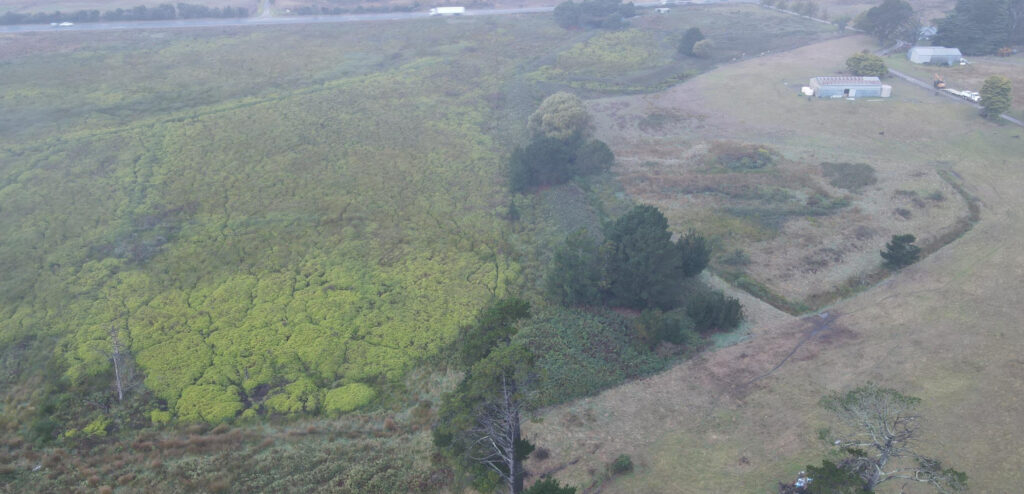
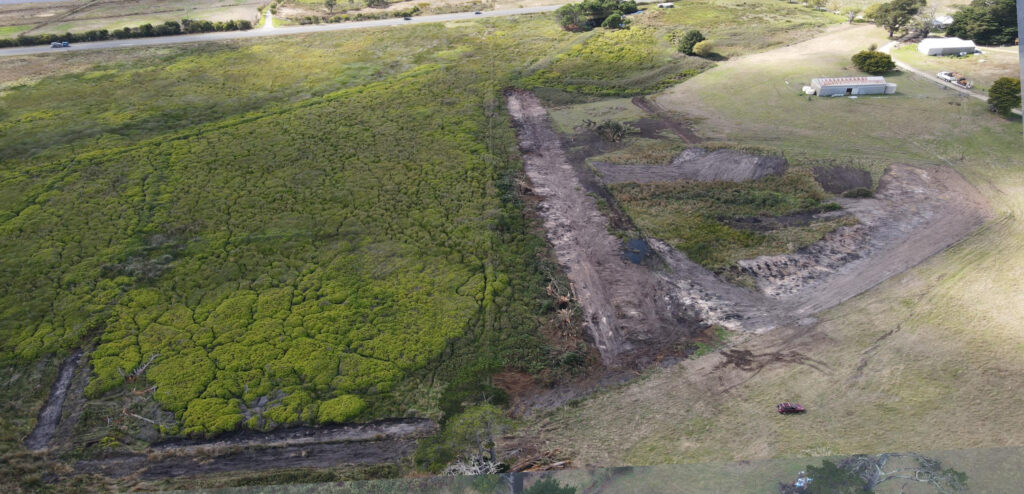
As you can see above, this part of the swamp was heavily modified and impacted by artificial drainage – especially via a 2-metre deep drain that ran west to east through the Council Reserve. Not only did the drains themselves de-water the peatland, but the large mound of spoil created by the construction process was the primary place where weeds like blackberry could become established.
The images taken before and after the works below, show just how serious this weed issue had become on the spoil mounds within the Council Reserve!
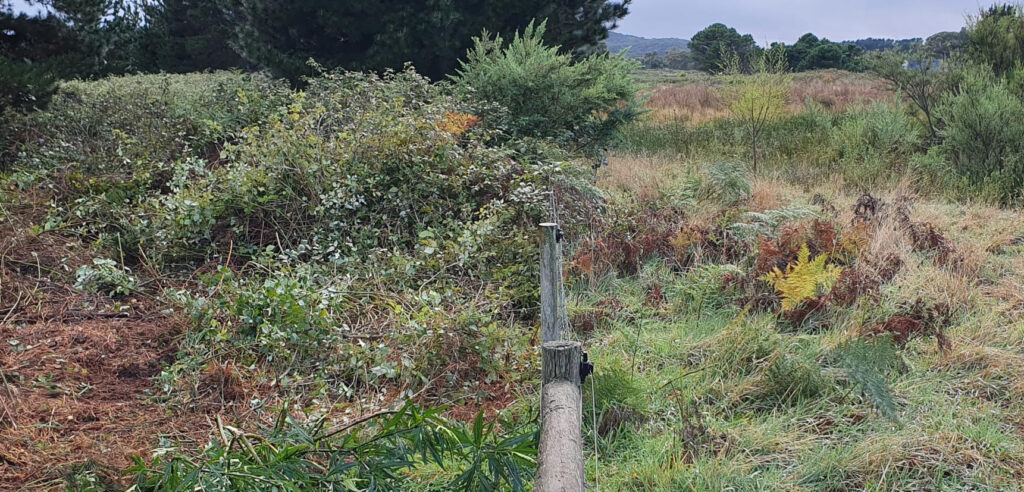
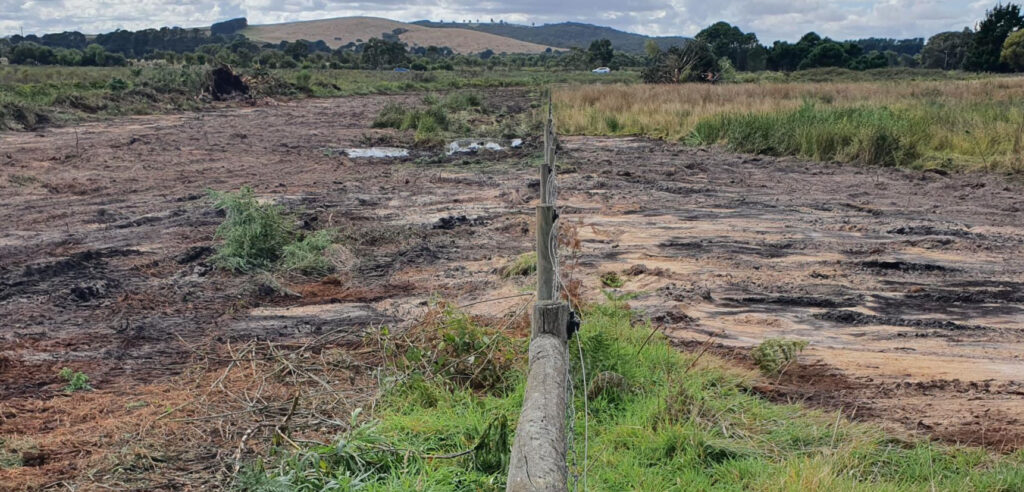
Despite the challenge posed by this site, the amazing thing about peatlands, which are often sustained by shallow groundwater, seepage or springs, is just how quickly their hydrology can respond to remediation works, as long as the underlying water resource has not been compromised. In the case of Square Waterhole Swamp, all the drains present (even the really deep ones) slowly seep water all year round. So once the drains were backfilled the water moves back upwards again through the peat profile (and also in this case the underlying sand), as this ground resaturates, before continuing to seep downslope, both laterally through the ground and across the surface. This restoration work is all about slowing (rather than stopping) the flow of water and making better use of it as it makes its way through the site, to assist in the reactivation and recovery of this threatened peatland environment.
If you use the pdf viewer below to click through the sequence of three images, you will see the area of the main drain: (page 1) before works in March 2023, (page 2) a few days after works in early April 2023 and (page 3) four weeks later at the end of April 2023, illustrating the process of peat resaturation – even occurring during the autumn which is typically the driest time of year in this part of the world.
Once you resaturate a peatland, the use of fire as a management tool to promote regeneration and maximise biodiversity values becomes a much more feasible proposition. This is because the risk of the upper profile of the peat itself catching alight is removed when it is wet. In the case of Square Waterhole Swamp, the fire management crew from DEW and National Parks and Wildlife SA have done a terrific job of coordinating seamlessly with the NGT team and the recent works to initiate a planned burn in this corner of the reserve, capitalising on the drain backfilling works and utilising some of them as fuel breaks to assist with the burn – as shown below.
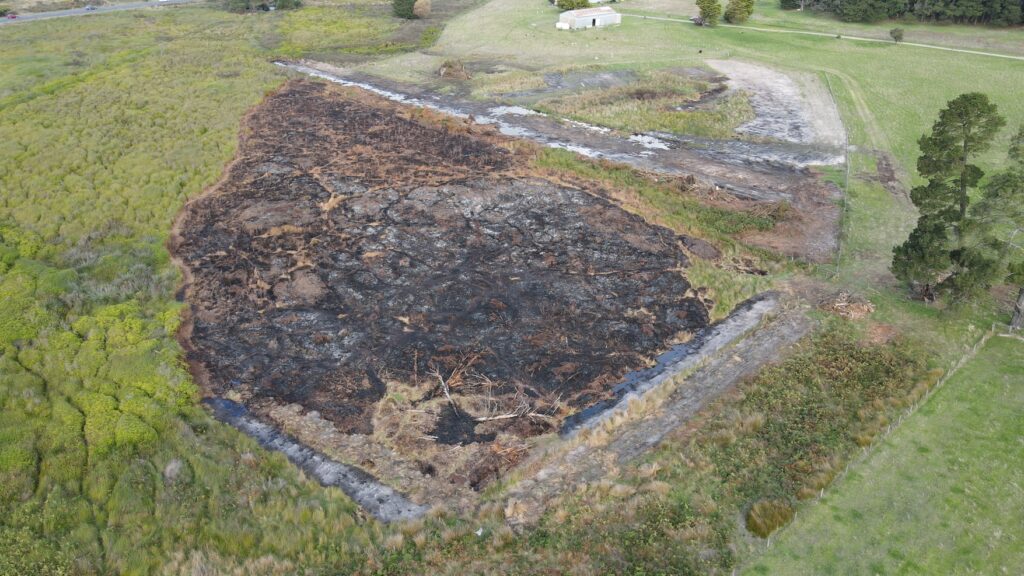
This order of activities, where possible, is actually the ideal way to coordinate hydrological restoration works and fire management in the peatland context, so a big thanks and well done to Ben Taylor from NGT and Andrew Sheath from DEW for coordinating the planning that allowed this to all come together so effectively!
The recent burn took place in two stages over the last couple of weeks of April, so let’s take a look at a final before and after view to wrap up this update:
The first image below shows the entire works area in late March 2023, as works were commencing (see the pine trees coming down in the top left), and the second image is the same view taken a month later at the end of April 2023, not long after the completion of the burn.
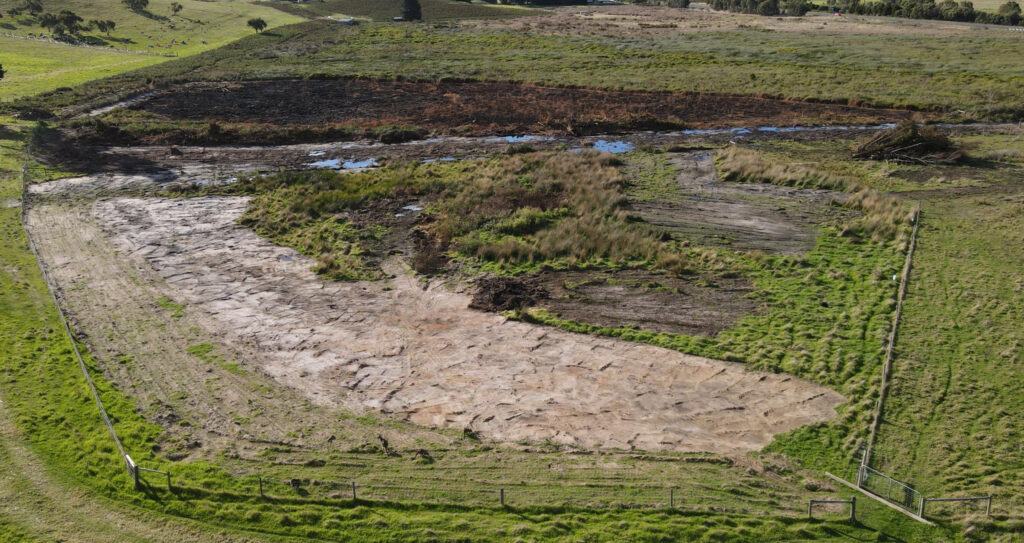
If you look closely in the second image above, the resaturation of the peatland is really quite evident within only 4 weeks, so just imagine how damp this area will remain now through the winter months? This rehydration process in this peatland will now continue and drive its ecological recovery, as Square Waterhole Swamp slowly expands to occupy more of its original footprint in this area. I hope you’ll agree – this means we have some very interesting and exciting times ahead!
By the way, if you would like to learn more about NGT’s peatland rehydration projects on the Fleurieu Peninsula, then follow this link for details of our upcoming presentation and field day, where we’ll be joined by the Friends of Stipiturus and Hesperilla Conservation Parks. This free event is being held in Mt Compass on the 20th May 2023, and is open to the pubic, but bookings are essential. We hope to see you there!
This work is being delivered by NGT in partnership with Friends of Stipiturus and Hesperilla Conservation Parks, funded by the National Parks and Wildlife Service, Friends of Parks Partnership Grants Program.


